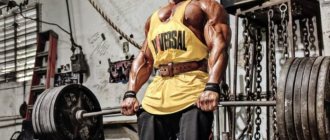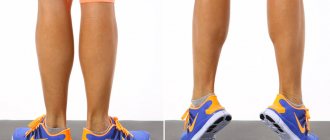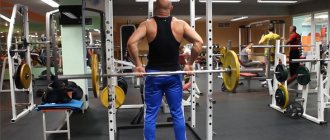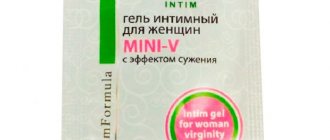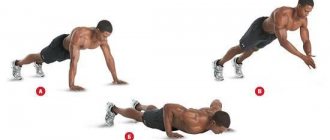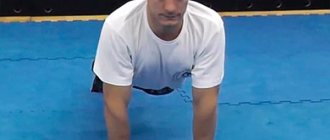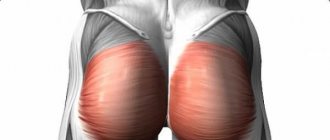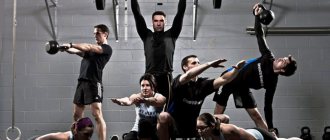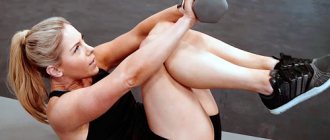Many people don't consider forearm training a priority for them. Huge shoulders, a wheel chest and sculpted quadriceps muscles are the dream of many. But what about the details?
There are no unnecessary trifles in bodybuilding and working on your body. Practicing the details helps build a beautiful body, starting from the head to the toes. The hamstrings, calves, rear deltoids and forearms are among the little things that, when properly developed, create a balanced and proportional body.
It is these seemingly insignificant details that can help you win or lose a bodybuilding competition, or simply make others admire you. Think about what massive shoulders are worth without a pair of tightly built forearms?
What will you get if you decide to pump up your forearms?
While they complement your look, they will also help you develop strength and functionality when lifting weights, and will later help you build mass in other areas such as your back, shoulders and biceps.
The forearms are indeed stimulated through lifting movements such as bending, lifting, and chin-ups/pulldowns, but in order for an athlete to reach their full potential and build strength in their forearms (especially if they are a weak point), they must incorporate specific training into their program . However, this does not mean that you need to do one or two movements at the end of your arm training day and perform the exercises at minimal intensity.
Can't wait to start training your forearms? We have prepared for you a basic advanced program that is suitable for all levels of training. Take it on a separate day of training or combine it with back/leg training.
Benefits of classes
The classic pull-up is a basic exercise in which the main load falls on the latissimus dorsi and biceps muscles. The deltoid muscles (shoulders) and trapezius are indirectly involved. Using low outdoor bars, you can do push-ups, pumping up your triceps, pectorals and deltoids. Developed lats and deltoids make the shoulders much wider and also form a V-shaped figure. People who do a lot of pull-ups boast toned biceps, forearms, and a broad back and shoulders.
Among the advantages of the horizontal bar are:
- the ability to practice anywhere there is a crossbar (home, gym, outdoor area);
- development of exactly those muscles that form an athletic figure (we pump only what is needed);
- elimination of back problems and formation of correct posture.
The exercise is not considered traumatic and is suitable for both beginners and experienced athletes. There are many techniques that allow you to expand your shoulders on the horizontal bar. They demonstrate the greatest effectiveness when exercised in adolescence up to 16–18 years of age (during this period, wide-grip pull-ups allow you not only to build muscles, but also to expand the shoulder bones).
The first result from pull-ups becomes noticeable after 1-2 months of regular exercise. At first, it is enough to do 3-4 approaches for the maximum number of repetitions. In the future, to build muscles and expand the shoulders, it is imperative to adhere to the principle of load progression. To make pull-ups more difficult, you can increase the number of repetitions in one approach, change your grip, or attach weights.
Ability to practice anywhere there is a crossbar
Development of muscles that create an athletic figure
Eliminating back problems and developing correct posture
How to pump up your forearms
Hammer grip dumbbell curls
- 3 sets of 10-15 reps
- Body part: Biceps Equipment: Dumbbells
Hammer grip bicep curls on a Scott bench
- 3 sets of 10-15 reps
- Body part: Biceps Equipment: Dumbbells
Biceps curl on the lower block
- 3 sets of 10-15 reps
- Body Part: Biceps Equipment: Block
Wrist Curl on Dumbbell Bench, Palms Down
- 3 sets of 10-15 reps
- Body part: Forearms and wrists Equipment: Dumbbells
Bend the wrists on the lower block while sitting on a bench
- 3 sets of 10-15 reps
- Body Part: Forearms and Wrists Equipment: Block
Add to Calendar * Add to My Workouts * Print Workout
* — The service is in beta testing
A quality set of forearm exercises deserves the same attention and discipline as squats or presses. A well thought out plan of action that includes proper volume, intensity and use of different angles is the best way to achieve maximum development.
A quick lesson in forearm anatomy
Surprisingly, the forearms are a complex group of small muscles with several functions. The brachialis and brachioradialis muscles help flex the arm at the elbow and assist the forearm during flexion. These muscles work during all flexion movements. The pronator teres muscle helps the forearm in the prone position, as well as when bending the arm at the elbow joint. The flexor muscles - palmaris longus, flexor carpi radialis and flexor carpi ulnaris - flex the palm, and the extensor muscles - ulnaris and extensor carpi radialis brevis - extend it.
To tone your forearms in a balanced manner, you need a comprehensive resistance training program that includes exercises for all parts of the forearm.
Muscle structure
The entire forearm has a thicker layer of skin than other parts of the arm. The forearm also has its own fascia, which covers the muscles on all sides, thereby forming three fascial spaces.
The largest bone in the forearm is the radius . There is also an ulna bone. These bones are attached to each other by joints and ligaments. It is thanks to this structure that the forearm is capable of performing various movements.
In the anterior fascial part there is group consisting of four layers:
- The first layer is the pronator orbicularis, which allows you to rotate the hand, the flexor carpi radialis, its function and the long muscle of the palm are immediately clear from the name.
- The second layer, the flexor digitorum superficialis, allows the middle part of the fingers to flex and extend.
- The third layer, the internal flexor digitorum, is responsible for flexing the thumb and also allows you to bend the upper parts of the fingers and the hand itself.
- The fourth layer is pronator , which allows you to rotate the hand in a circle.
Bodymaster.ru recommends Training Plans:
Pay attention to complex biceps exercises, especially in the first half of the workout. When working with dumbbells for biceps, the muscles of the forearms are also included in the work. Several joints work at once, which increases the area and depth of the fibers involved. When working with dumbbells only with the hands (flexion/extension of the wrists with any grip), you can only count on “pumping” the forearms or detailing the muscles if you perform many repetitions with a light or medium weight.
The training program must necessarily include exercises for all muscle groups of the arms. It is advisable to change the choice of specific exercises and the sequence of their implementation from training to training - this will improve muscle growth. In this option, we have selected a combination of isolating and compound exercises for the forearms. Ideally, perform it in circles, from 2 to 4 according to your level of training.
Additional exercises with dumbbells
The barbell is not suitable for some exercises, so other sports equipment comes to the rescue.
Pumping up the forearms will not be as effective if you don’t pump up the sides of this part of the arms. And this implies movements in the wrist joint to the right and left in the plane of the palm, which is impossible to do with a bar.
So let's look at a couple of exercises for the forearms with dumbbells.
The first is done like this:
- Sit on a bench, first holding a dumbbell in your hand. Place your hand on your knee so that the dumbbell is perpendicular to the floor. That is, pancakes up and down. If you take 2 dumbbells and place both hands in this way, your palms will face each other.
- Move the hand and dumbbell up and down with maximum amplitude. The movements will be minor, but this helps to finish off the muscles and use certain bundles of the forearms.
To pump up the other side of your hand, you need to do this:
- Take a dumbbell and sit on a bench.
- Place one hand with your elbow on your knee, bending it.
- Raise your other arm so that your elbow and shoulder are at the same level.
- Place the second hand closer to the wrist in the first hand. That is, with the palm of your lower hand you should clasp your upper hand near the wrist. Thus, the elbow of the second hand will point slightly upward. If you raise your hand above your elbow, it will be even better.
- Hold the dumbbell with your other hand and move your hand up and down. The amplitude will again be insignificant - this is normal. In this plane the joint has limited mobility.
In general, these two exercises are more about subtleties. You can limit yourself to just working with a barbell. This is enough to create muscle mass in the arms below the elbow.
If you don’t have a barbell, you can use dumbbells instead and do the same exercises, plus an option when your palms are oriented towards each other.
To have pumped up forearms, it is enough to work them out once a week. You can do this on any training day.
Forearm Workout at Home: Reducing Wrist Tension
Wrist Curls on a Dumbbell Bench, Palms Up
- 3 sets of 10-15 reps
- Body part: Forearms and wrists Equipment: Dumbbells
Wrist Curl on Dumbbell Bench, Palms Down
- 3 sets of 10-15 reps
- Body part: Forearms and wrists Equipment: Dumbbells
Hammer grip dumbbell curls
- 3 sets of 10-15 reps
- Body part: Biceps Equipment: Dumbbells
Medium grip push-ups
- 3 sets of 15 reps
- Body Part: Chest Equipment: No
Close grip push-ups
- 3 sets of 10 reps
- Body Part: Chest Equipment: No
Add to Calendar * Add to My Workouts * Print Workout
* — The service is in beta testing
You will need a set of dumbbells, which can be replaced with cans of water or other suitable weights. Remember to always do it correctly and not use too much weight for your safety.
Basic exercises for pumping up large forearms
There are a variety of arm exercises at your disposal, with an emphasis on the forearms. Let's look at several basic types and then recommend combining new ones yourself using the base of forearm exercises.
Weighted wrist curl
Basic wrist curls are performed using the flexor muscles and can be performed with a barbell, cable, or dumbbells. The advantage of using dumbbells occurs when an athlete has limited forearm rotation and finds it difficult to use a straight bar. Simply grab the weight with a shoulder-width grip and place your forearms on the bench or thighs so that your arms are down towards the floor. You can use a chair for this at home, or a bench in the hall.
Wrist curl with a barbell while sitting on a bench, palms up
Begin to stretch your forearms and lower the weight to the floor, holding the bar tightly. Return to the starting position for a strong muscle contraction. The range of motion in this exercise is small, so to avoid injury, try to work smoothly and not jerk the weights.
Those who find resting their forearms on a bench or knees a little awkward should try standing barbell behind-the-arm curls. Stand up holding a barbell with an overhand grip behind your hips. Place your forearms against your buttocks for support and, using only your arms, lift the barbell.
Standing behind-the-back wrist curls with barbell
Performing the movement in this manner can sometimes relieve the pain that athletes may experience when stretching during a traditional exercise.
Palm down wrist curl
The palm-down wrist curl is performed in a similar way, only with the palms facing down, which works the extensor muscles. Hold a barbell, cable handle, or set of dumbbells on a bench or thighs with your palms facing the floor and let the weight stretch your extensor muscles. Then reverse the movement and contract the muscles at the peak of the exercise. Remember to control your movements and avoid swinging the scales.
Barbell Palms Down Wrist Curl
For intense repetitions, try holding the muscles contracted at the peak of the exercise for a few seconds. You don't need to use a lot of weight, the results will be impressive even with light weights.
Hammer grip dumbbell curls
Commonly used to target the biceps, hammer-grip dumbbell curls are a solid addition to a forearm-toning program. By working the brachialis and brachioradialis muscles along with the biceps, this exercise also helps develop the forearm. Simply hold a pair of dumbbells at your sides with your thumbs pointing forward. Shift your weight to your shoulder without supinating your forearm, making the movement look like a punch. Switch hands and repeat.
Best exercises
Let's move from theory to practice and look at how to build powerful forearms. To do this, you need only the most effective and efficient exercises. Of course, this does not mean that you need to get carried away and do all the movements in one workout. Very often, in pursuit of how to pump up huge forearms, athletes literally overdo it and, as a result, do not get a decent return.
It is important to remember that for a small muscle group it is enough to do 1-2 basic movements and 1-2 isolating ones. This rule applies to everyone, both athletes who train their forearm at home and those who work out in the gym.
Finger exercisers
There are many modifications of mini-simulators that allow you to quickly pump up your forearms at home and strengthen your grip well. Of course, you won’t get huge volumes with such devices, but you can quickly eliminate the weak link that prevents you from training.
The variety of finger exercisers is truly impressive. The simplest is the carpal expander or “donut”, which is considered one of the most effective. This is a great option for pumping up your forearms at home without iron. You can also find exercise machines with a spring, where the compression force is much greater. They are also good for home workouts.
It is important to remember that you do not need to buy complex and expensive exercise equipment; wrist expanders and “donuts” will be quite enough. In pursuit of how to quickly pump up their forearms, athletes often come up with rather outlandish devices.
For example, simulators that are attached to the wrist and the first phalanges of the fingers, between which cords or springs are stretched. Despite their unusual appearance, they do not provide any advantage over conventional expanders, although they are much more expensive.
Holding the bar
This is one of the simplest exercises for the forearms, which can even be adapted to be performed at home. It is important to remember that you need to hold the barbell with an open grip, that is, on your fingers. This technique is a simplified replacement for the finger hang on the bar, which requires a strong grip.
Usually the hold is done in two modes, performing it either for 35-40 seconds with a submaximal weight (so that after 30 seconds it is very difficult to hold the weight), or until failure.
You can pump your forearms not only with a barbell, but also with any weight, so the bar can be replaced with a kettlebell or dumbbells.
Pancake Hold
This is not just one of the best exercises, but also the most common way to test the actual development of your forearms. The thickness of the plate is ideal for training your grip. Try to use the maximum weight and move on to heavier pancakes over time.
For those athletes who want to pump up their forearms at home, the exercise will be available only if they can find an analogue of the pancake. It is important that the projectile does not allow you to use a full grip. The weight should be supported on the fingers.
Neck extenders
The use of expanders has gained incredible popularity in recent years. In most cases, they are enough to fully load the lower arm and hand while training other muscle groups. This allows you to develop a muscle group in the so-called passive mode.
For example, when performing biceps curls with a large bar (EZ is not suitable), the forearm will be loaded no worse than when doing flexions and extensions. Moreover, this option is also effective in that it ensures a uniform increase in arm strength and mass.
It is important to remember that the extenders must be rigid so that the grip is secure and the bar does not slip out of your hands. Try to choose a material that will not slip. Also, beginners should avoid ball-shaped extenders; without a strong grip, they are unlikely to be able to use them to their full potential.
Farmer's Walk with Dumbbells
Thanks to this exercise, strongmen never have problems with weak forearms. Moreover, it is in this sport that athletes have the strongest grip, which allows them to perform all exercises (atlas spheres, deadlifts, holding equipment with an outstretched arm, etc.).
It makes sense that this forearm exercise for men is incredibly effective, even when done with dumbbells.
Even if you do a farmer's walk with dumbbells to pump up your forearms at home, the exercise should be as hard as possible. Otherwise, the exercise will not be effective.
It is optimal to do a walk in a timed manner, for example, from 30 to 50 seconds. If you can perform the exercise after 50 seconds, then the weight was chosen incorrectly and the dumbbells should be heavier. The key conditions for a proper farmer walk should be:
- Straight back;
- Neck in a neutral position (look straight ahead, at the horizon);
- Chest straightened forward and shoulder blades pulled together.
You also need to remember that it is better not to take a walk if you have underdeveloped core muscles and problems with the spine (especially in the lumbar region).
Bodymaster.ru recommends Fitness Trainers:
Another way to perform this exercise, which is considered more effective by most, is the dumbbell cross raise. What makes this variation different is that instead of raising your arms to your sides, you need to lift the dumbbells across your upper body towards the opposite shoulder. Don't forget to alternate hands.
Lifting dumbbells for biceps with a hammer grip to the side
Reverse grip barbell curl
Those who like interesting variations of exercises may like this alternative to dumbbell biceps curls - curling your wrists with a barbell, palms down, from a standing position. Perform the exercise in the same way as when working out the biceps, only take the bar with a reverse grip shoulder-width apart. Maintain proper technique and use moderate weight.
Reverse grip barbell lift
To get the most out of your forearms, try performing barbell curls on a Scott bench. This will not only prevent fraudulent movements, but will also ensure isolation of the muscles being trained. Choose a moderate weight to control all movements during the exercise.
EZ-barbell curl on a Scott bench
Working on your grip strength
There are many ways to improve your grip to increase the strength and mass of your forearms. Grip exercises, no straps for certain back exercises, and the use of plates are just a few methods for better forearm development. One of the most effective and convenient techniques is to firmly grip the bar at the end of all sets of wrist curls. After each set of curls, raise the weight to a contracted position and hold the bar for 5-10 seconds. This will be difficult to do after a regular set, but this exercise will improve your grip strength and add intensity to your forearm training program.
We also recommend that you familiarize yourself with exercises with a kettlebell from Victor Blud to develop a strong grip.
This complex of 3-5 approaches can also be done at home.
Training with an expander
The wrist expander is considered a basic exercise machine for pumping up the muscles of the forearms. Such devices differ in shape and level of rigidity. Rubber ring-shaped samples require a compression force in the range of 15-65 kg. Resistance bands, which consist of crossed handles and look like scissors, are used by advanced athletes because they require greater effort during use.
Forearm training with a wrist expander is simple. It is enough to grab the device with your palm and squeeze it to the limit. To properly load the forearm, you should do several dozen repetitions. Then you can move on to working the muscles of the second limb.
Workout No. 1 for beginners
Wrist curl with a barbell while sitting on a bench, palms up
- 3 sets of 10-15 reps
- Body part: Forearms and wrists Equipment: Barbell
Barbell Palms Down Wrist Curl
- 3 sets of 10-15 reps
- Body part: Forearms and wrists Equipment: Barbell
Add to Calendar * Add to My Workouts * Print Workout
* — The service is in beta testing
Next, after a few sessions, you can add alternative standing lifting exercises.
Workout No. 2 intermediate level
Standing biceps curl with reverse grip
- 3 sets of 10-15 reps
- Body part: Biceps Equipment: Barbell
Standing behind-the-back wrist curls with barbell
- 3 sets of 10-15 reps
- Body part: Forearms and wrists Equipment: Barbell
Hammer grip dumbbell curls
- 3 sets of 10-15 reps
- Body part: Biceps Equipment: Dumbbells
Add to Calendar * Add to My Workouts * Print Workout
* — The service is in beta testing
And for a more complex version, we recommend adding work in supersets and isolating exercises on the Scott bench.
Workout No. 3 advanced level
Squeeze the bar for 5 to 10 seconds after each set of
Superset 1
Wrist curl with a barbell while sitting on a bench, palms up
- 3 sets of 10-15 reps
- Body part: Forearms and wrists Equipment: Barbell
Barbell Palms Down Wrist Curl
- 3 sets of 10-15 reps
- Body part: Forearms and wrists Equipment: Barbell
Superset 2
Biceps curls on a Scott bench with an EZ barbell with a reverse grip
- 3 sets of 10-15 reps
- Body part: Biceps Equipment: Barbell with EZ bar
Lifting dumbbells for biceps with a hammer grip to the side
- 3 sets of 10-15 reps
- Body part: Biceps Equipment: Dumbbells
Add to Calendar * Add to My Workouts * Print Workout
* — The service is in beta testing
And in conclusion, we recommend watching brief instructions on training the outer forearms from Denis Semenikhin.
How to pump up your forearms on the horizontal bar
There are many exercises available in the gym to pump up your forearms, but not everyone knows how to pump up your forearms by training on the horizontal bar. Using a horizontal bar during pull-ups, you can force your forearms to work a little by choosing an appropriate, for example, narrow grip.
Close grip pull-ups
But the most effective is hanging on a horizontal bar using various techniques and with weights. The hands have to hold on to the bar, the muscles of the forearms are in constant static tension, which leads to their pumping. Let's consider several variations:
- Hanging on the horizontal bar, doing a “roll up and roll up” grip
- Isometric hang variation
- Hanging with a bar extender
We recommend watching Yuri Spasokukotsky’s recommendations in more detail in his video.
Taking sports supplements - creatine, arginine, intra-workout, bcaa amino acid and pre-workout complexes will also help you increase your strength. These sports nutrition products are specifically formulated to improve performance in sports and fitness for men and women. Just add it to your diet and go ahead to conquer new heights!
Progression of loads
To pump up the muscles of the forearms, you need to resort to a progression of loads. This principle can be described by the phrase “Better than yesterday.” The principle of progression is responsible for 80% of muscle growth, so it is extremely important for you to understand it now. Muscle growth is triggered by the stress that an athlete receives during training. The body adapts to this stress and builds up “armor”—muscles. The load that made you curse the gym the first morning after training, a week later seems not so “hellish”, and after a month it becomes completely easy. We built up muscle mass and adapted to stress. It's time to move on - increase the load again and adapt to the new stress.
But most gym goers don't understand this. They mark time year after year. The body tries to maintain balance and not waste energy on muscle growth. If you don’t overcome yourself, and don’t get more stress at each (or every 2-5) workout than in the previous session, your muscles won’t grow. This is how the principle of load progression looks like in the example of training with an expander:
| Exercise | Day | Expander rigidity | Approaches | Repetitions | Rest between sets in minutes |
| Squeezing the expander | 1 | 45 | 5 | 12 | 1 |
| Squeezing the expander | 2 | 45 | 6 | 12 | 1 |
| Squeezing the expander | 3 | 45 | 7 | 12 | 1 |
| Squeezing the expander | 4 | 45 | 8 | 12 | 1 |
| Squeezing the expander | 5 | 54 | 5 | 12 | 1 |
| Squeezing the expander | 6 | 54 | 6 | 12 | 1 |
| Squeezing the expander | 7 | 54 | 7 | 12 | 1 |
| Squeezing the expander | 8 | 54 | 8 | 12 | 1 |
| Squeezing the expander | 9 | 63 | 4 | 12 | 1 |
| Squeezing the expander | 10 | 63 | 5 | 12 | 1 |
Super compensation
This paragraph is vital for those who:
- 1. Every week, every day, he plows in the hall like a galley slave, but sees no result.
- 2. Believes that skipping a workout (postponing a trip to the gym several days in advance) will not help him.
Let's disappoint both groups: training too often and too infrequently is pointless. In the first case, we are faced with physical and mental overtraining. In the second, the development of the forearms is impossible due to too low training stress. Let us highlight 4 stages of the training process:
- 1. Receiving microtraumas. This is a workout that causes micro-tears in the muscles.
- 2. Recovery. Starts immediately after completing your workout. The duration of recovery depends on many factors, the main one being the severity of the training load. After completion of the second stage, muscle tissue is completely restored to the initial level.
- 3. Supercompensation. It is in this phase that training should be carried out. It is in the progression of the load during the period of supercompensation that the answer to the question “How to develop forearms?” lies. The muscles were restored to pre-workout levels, and the body made a small reserve in case such “bullying” happened again.
- 4. Loss of super compensation. The body understands that there will be no new “bullying” in the form of training, and stops spending energy on maintaining the increased muscle mass. Your forearm muscles return to pre-workout levels.
An athlete who trains too much always gets stuck in the recovery phase. He simply does not reach supercompensation! An amateur who skips training “leaps over” supercompensation. For him, training makes no sense.
Here's what it looks like in practice:
Training on Monday
| Training apparatus | Rigidity | Approaches | Repetitions | Rest between sets |
| Carpal expander | 54 | 7 | 12 | 1 |
The athlete trained his forearms on Monday. Now let's consider what will happen to him if he tries to follow the principle of progression of loads on one day or another of the week.
Training on Tuesday
| Training apparatus | Rigidity | Approaches | Repetitions | Rest between sets |
| Carpal expander | 54 | 4 | 12 | 1 |
Recovery has just begun, and we have already managed to conduct a new training session. This activity not only did not benefit the forearm muscles, but also harmed them, slowing down recovery.
Training on Wednesday
| Training apparatus | Rigidity | Approaches | Repetitions | Rest between sets |
| Carpal expander | 54 | 6 | 12 | 1 |
The restoration is almost complete. You cannot train in this phase.
Thursday morning workout
| Training apparatus | Rigidity | Approaches | Repetitions | Rest between sets |
| Carpal expander | 54 | 7 | 12 | 1 |
Recovery is complete, but there is no point in training.
Thursday night training
| Training apparatus | Rigidity | Approaches | Repetitions | Rest between sets |
| Carpal expander | 54 | 8 | 12 | 1 |
Supercompensation has begun. You can train here.
Training on Friday
| Training apparatus | Rigidity | Approaches | Repetitions | Rest between sets |
| Carpal expander | 54 | 9 | 12 | 1 |
Peak supercompensation. The perfect moment for training.
Training on Saturday
| Training apparatus | Rigidity | Approaches | Repetitions | Rest between sets |
| Carpal expander | 54 | 8 | 12 | 1 |
Supercompensation has been partially lost, but you can still train.
Training on Sunday
| Training apparatus | Rigidity | Approaches | Repetitions | Rest between sets |
| Carpal expander | 54 | 7 | 12 | 1 |
Loss of super compensation. We're back to pre-workout levels.
